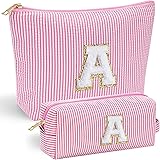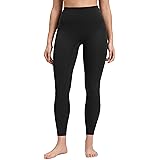As highlighted in the illuminating discussion above, a staggering truth confronts the fashion industry and, by extension, every consumer: one truck full of clothes is wasted every single second. This shocking statistic underscores an urgent call to action, compelling us to critically re-evaluate our relationship with clothing and embrace more responsible practices. The world of sustainable fashion is not merely a trend; it represents a fundamental shift towards environmental and social responsibility, intricately linked with the United Nations Sustainable Development Goals (UN SDGs).
The Alarming Reality of Textile Waste and Why Sustainable Fashion Matters
The fast fashion model has conditioned consumers to view clothing as disposable, fueling a cycle of overconsumption and immense waste. Millions of tons of textiles end up in landfills annually, contributing significantly to pollution, greenhouse gas emissions, and resource depletion. Moreover, the production process itself demands vast quantities of water, energy, and often involves harmful chemicals, impacting ecosystems and human health.
However, an alternative path is not only possible but actively being forged. Sustainable fashion seeks to mitigate these detrimental effects by promoting practices that are environmentally sound, socially just, and economically viable. It’s about creating a circular economy where clothes are designed to last, repaired, reused, and ultimately recycled, rather than discarded after a few wears.
Fashion for Good: Embracing Sustainable Trends with the UN SDGs
The journey towards sustainability often feels complex, yet platforms like the Tokyo Girls Collection are demonstrating how fashion can serve as a powerful catalyst for change. By launching initiatives such as their Sustaina-Stage for UN SDGs Action, they are actively working to make sustainable choices not just acceptable, but desirable and cool. This approach taps into the immense influence of fashion, especially among younger generations, to reshape perceptions.
Tokyo Girls Collection: Making Sustainability Stylish
When influential events like the Tokyo Girls Collection champion sustainability, they send a clear message: ethical clothing can be just as fashionable and trend-setting as any other. This is crucial for shifting consumer behavior on a larger scale. By showcasing designers and brands committed to eco-friendly materials and ethical production, they normalize and celebrate conscious consumerism. In contrast to the often-hidden environmental impacts of traditional fashion, these platforms bring sustainability to the forefront.
This integration of sustainability into mainstream fashion allows individuals to connect with global issues like the UN SDGs through something as personal and expressive as their wardrobe. It proves that personal style and planetary well-being are not mutually exclusive. Instead, they can be harmoniously integrated, driving a positive impact on both a local and global scale.
Decoding Ethical Clothing: The Importance of Materials and Certifications
Making informed choices about clothing requires understanding what goes into its production. The materials and ingredients used are critical indicators of a garment’s environmental footprint. For example, conventional cotton production is notoriously water-intensive and relies heavily on pesticides, while organic cotton minimizes these impacts.
Similarly, the origin of materials profoundly affects a garment’s carbon footprint. Textiles shipped from distant corners of the globe accumulate significant CO2 emissions through transportation. Opting for clothing made from locally sourced or domestically produced materials, where possible, can drastically reduce these emissions. This transparency in the supply chain is a cornerstone of responsible sourcing.
Navigating Clothing Certifications for Eco-Friendly Choices
For many consumers, delving into the intricate details of a product’s supply chain can be overwhelming. This is where certifications become invaluable shortcuts. They act as third-party verifications that a product meets specific environmental, social, or ethical standards, saving consumers time and effort in their research.
For instance, certifications like EKOAGROS, often found on products in Europe, indicate that an item has met rigorous ecological standards throughout its production process. Other widely recognized certifications include the Global Organic Textile Standard (GOTS) for organic fibers, Fair Trade Certified for ethical labor practices, and bluesign® for responsible manufacturing. These labels provide assurance that a garment has been produced with a reduced environmental impact and often under fair working conditions, fostering greater trust in the ethical clothing market.
The Carbon Footprint of Your Wardrobe: Sourcing Matters
Beyond the materials themselves, the journey a garment takes from raw material to your closet carries a substantial carbon footprint. This includes the energy used in manufacturing, dyeing, and finishing processes, as well as transportation. Choosing products from brands that prioritize local production or have transparent supply chains can help minimize this impact.
Furthermore, innovative materials like recycled polyester, Tencel (lyocell), and hemp offer more sustainable alternatives to conventional fabrics. These materials often require less water, fewer chemicals, or utilize waste products, contributing to a more circular fashion economy. A shift towards these eco-friendly materials is essential for a truly sustainable fashion industry.
Challenging Fast Fashion: The Power of Conscious Consumption
The core of sustainable fashion lies not just in what we buy, but how and why we buy it. The rapid cycles of fast fashion encourage impulse purchases and short-lived trends, leading to the rapid disposal of garments. Changing this ingrained psychology requires a deliberate shift in consumer behavior and a greater appreciation for the longevity of clothing.
The Fashion Detox Challenge: A Path to Mindful Buying
As Dr. Emma Kidd advocates through her Fashion Detox Challenge, taking a deliberate pause from buying new clothes can be incredibly insightful. Refraining from purchases for a set period, such as ten weeks (approximately 2.5 months or 70 days), forces individuals to confront their existing wardrobe and their consumption habits. This challenge reveals how many unnecessary purchases are made out of habit or desire rather than genuine need.
During a Fashion Detox, people often rediscover forgotten items, get creative with styling, and gain a renewed appreciation for what they already own. This practice not only saves money but also significantly reduces an individual’s environmental footprint by slowing down the demand for new production. It’s a powerful exercise in mindful consumption, highlighting that true value often lies in what we already possess.
Shifting Your Psychology: Rethinking Every Purchase
The fundamental question posed by the Fashion Detox Challenge is simple yet profound: “Do you really need it now?” This prompts a moment of reflection before every potential purchase, moving away from impulsive buying towards considered decisions. It encourages consumers to think about a garment’s lifecycle, its origin, its impact, and its necessity in their wardrobe.
By challenging the urge for instant gratification, individuals can cultivate a more thoughtful approach to shopping. This doesn’t mean never buying new clothes, but rather buying fewer, higher-quality items that are made to last and align with their values. This psychological shift is paramount in combating textile waste and fostering a truly sustainable fashion ecosystem.
Connecting the Threads: How Every Choice Impacts Our Planet
Ultimately, the principles of sustainable fashion echo the broader message of the UN SDGs: everything is interconnected. The choices we make as consumers have ripple effects throughout supply chains, communities, and ecosystems worldwide. From the soil where fibers grow to the hands that weave them, and eventually to the landfill, each step carries consequences.
Embracing sustainable fashion is an empowering way to contribute positively to these global challenges. Whether by supporting brands committed to ethical practices, extending the life of existing garments, or participating in initiatives like the Fashion Detox Challenge, every conscious decision contributes to a more sustainable future. The growing movement for sustainable fashion is a testament to the power of collective action, demonstrating that individual choices can indeed drive significant global change.











